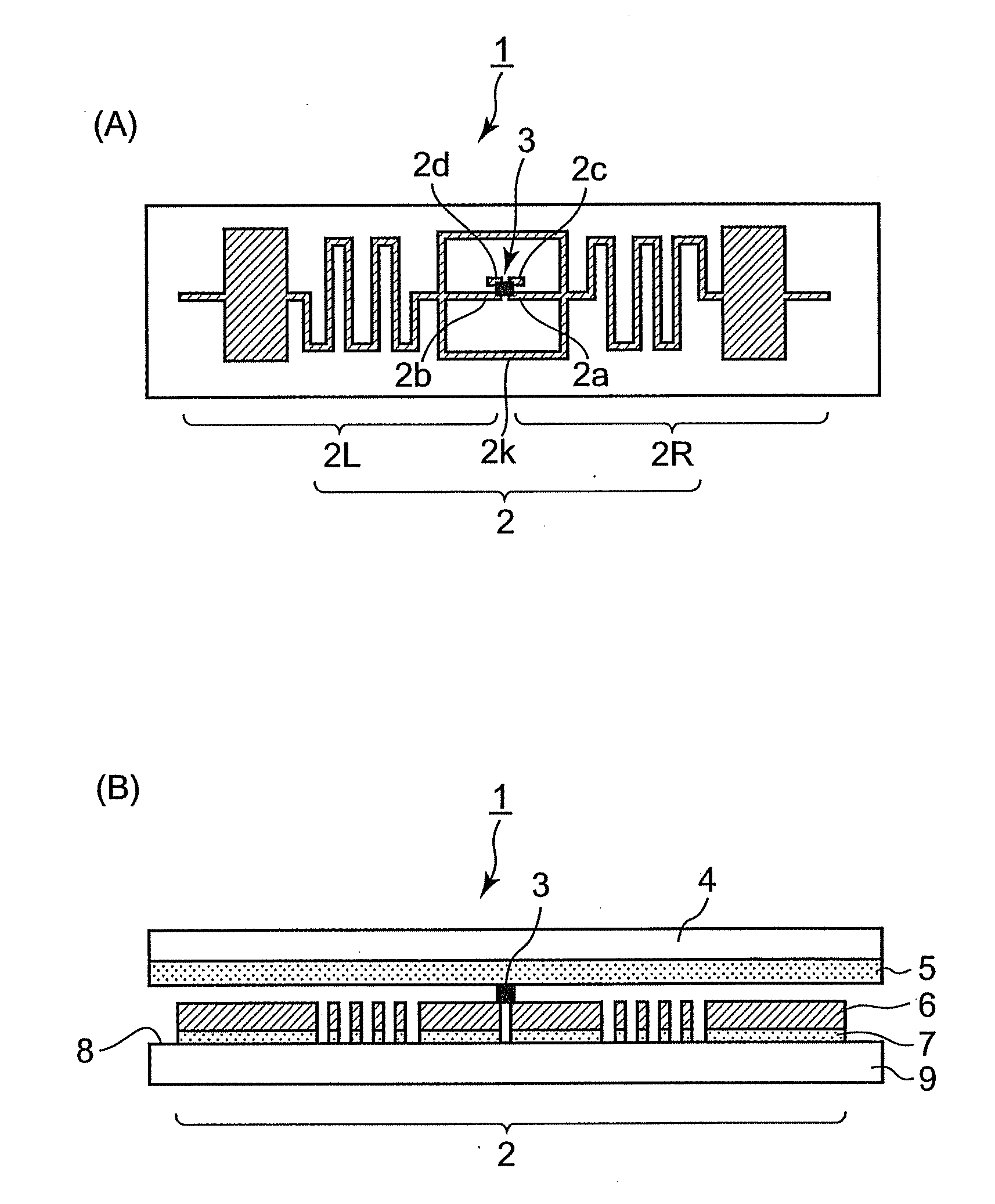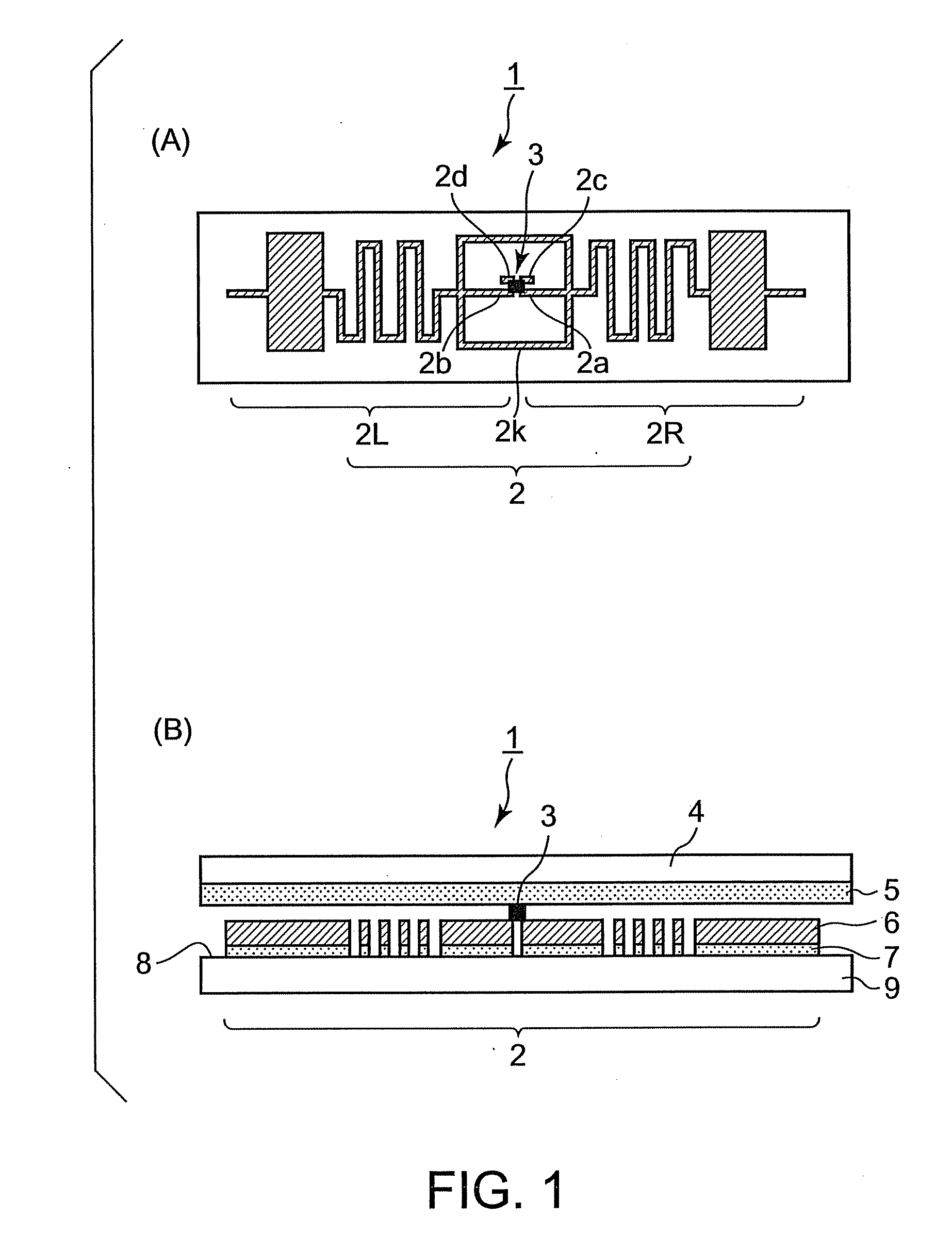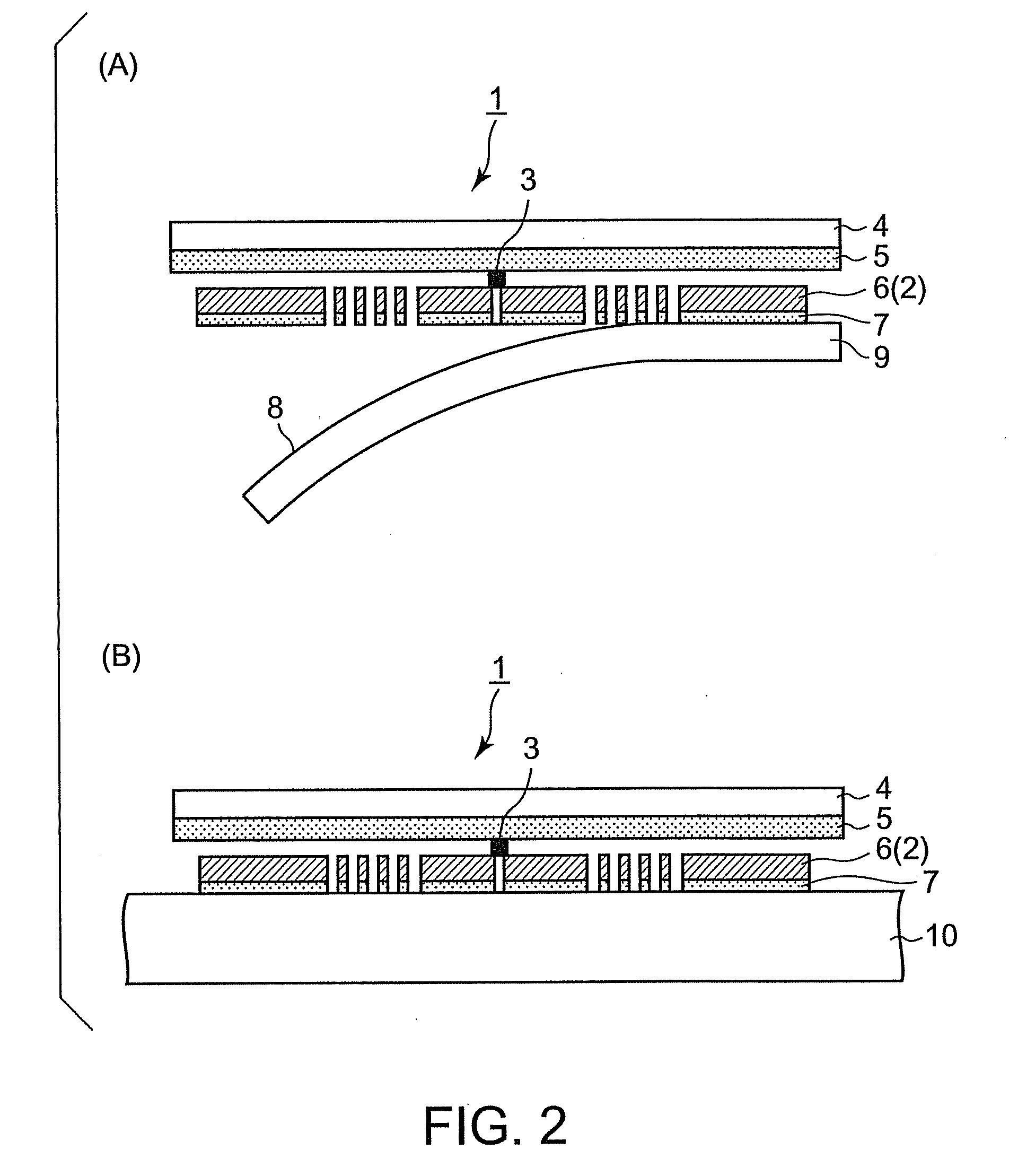Noncontact IC tag label and method of manufacturing the same
- Summary
- Abstract
- Description
- Claims
- Application Information
AI Technical Summary
Benefits of technology
Problems solved by technology
Method used
Image
Examples
first example
[0082]An aluminum foil having 120 mm wide by 15 μm thick, coated with a polyester-based hot-melting adhesive agent (thermo adhesive resin layer 7h) to a thickness of 20 μm, is used as a continuum of an antenna material 2m. Kraft paper surface-coated with silicone to a width of 120 mm and a thickness of 100 μm is used as a release paper 9. The antenna material 2m is overlaid upon the release paper 9 so as to face upward, and then supplied to a test-produced flat-bed antenna-cutting die 20 containing a heat source. A dipole antenna 2 of the shape as shown in FIG. 1 is continuously die-cut at 50-mm intervals. The cutting die 20 is a device having the foregoing air holes 81 and constructed to connect to a suction / discharge device 82. The heat source is also inserted within a receiving die side of the cutting die so that the thermo adhesive resin layer 7h is fully heated and fused.
[0083]After a portion of the continuum 10w of the die-cut antenna material 2m is moved past between separati...
second example
[0084]An aluminum foil having 120 mm wide by 15 μm thick, including an adhesive resin layer 7 coated with an acrylic pressure-sensitive adhesive agent 7n to a thickness of 25 μm, is used as a continuum of an antenna material 2m. Kraft paper surface-coated with silicone to a width of 120 mm and a thickness of 80 μm is used as a release paper 9. The antenna material 2m is overlaid upon the release paper 9 so as to face upward, and then supplied to the flat-bed antenna-cutting die 20 used in the first example. However, the present (second) example does not use a heat source.
[0085]A dipole antenna 2 of the shape as shown in FIG. 1 is continuously die-cut at 50-mm intervals. After a portion of the continuum 10w of the die-cut antenna material 2m is moved past between separating rollers 20a and 20b, then a necessary section of the antenna 2 is separated from an unnecessary section, and a precise antenna pattern shape is obtained in a thermally transferred condition on the surface of the r...
PUM
 Login to View More
Login to View More Abstract
Description
Claims
Application Information
 Login to View More
Login to View More - R&D
- Intellectual Property
- Life Sciences
- Materials
- Tech Scout
- Unparalleled Data Quality
- Higher Quality Content
- 60% Fewer Hallucinations
Browse by: Latest US Patents, China's latest patents, Technical Efficacy Thesaurus, Application Domain, Technology Topic, Popular Technical Reports.
© 2025 PatSnap. All rights reserved.Legal|Privacy policy|Modern Slavery Act Transparency Statement|Sitemap|About US| Contact US: help@patsnap.com



